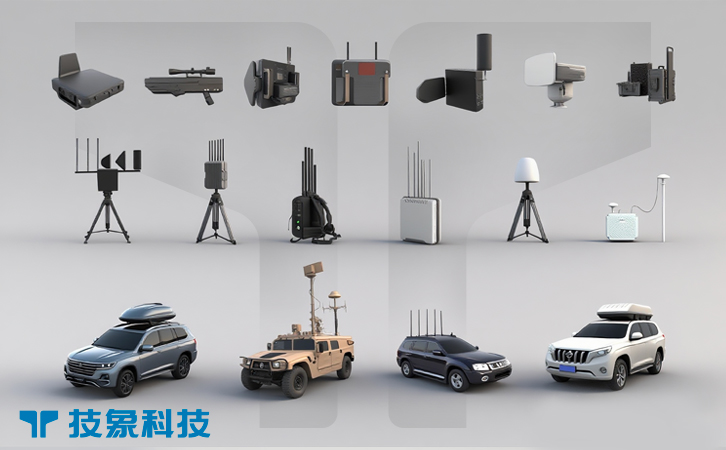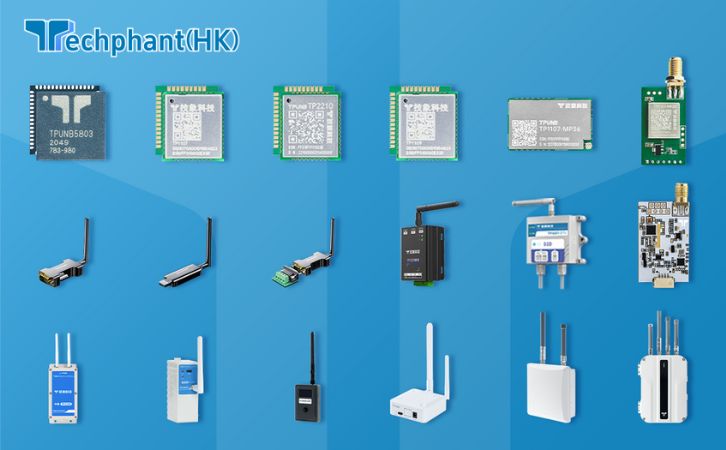The drone boom, with over 6 million unmanned aerial vehicles (UAVs) in global use by 2025, has escalated threats to airspaces, from civilian disruptions at airports and events to military reconnaissance in conflict zones. Multi-sensor fusion systems, which integrate radar, radio frequency (RF), acoustic, and optical/infrared (IR) sensors with AI-driven analytics, provide a robust counter-drone solution by combining the strengths of each detection method to create a unified airspace picture. These systems offer comprehensive threat detection and tracking, overcoming the limitations of standalone sensors in complex environments like urban areas or battlefields. By fusing diverse data streams, they ensure accurate identification and rapid response, critical for protecting sensitive sites. This article explores the growing drone threat, the mechanics of multi-sensor fusion, its real-world applications, and the challenges and future potential of this integrated counter-UAV technology.
I. The Growing Drone Threat and Need for Multi-Sensor Fusion
Rogue drones have become a pervasive danger, with over 2,500 incidents reported globally in 2024, including disruptions at major airports and public events, costing millions in economic losses, as seen in the 2018 Gatwick Airport shutdown affecting 140,000 passengers. In military contexts like Ukraine, low-cost UAVs—some under $5,000—execute swarms or surveillance, overwhelming traditional defenses like missiles, which cost millions per engagement. Autonomous drones, minimizing RF emissions, further complicate detection in cluttered or noisy environments.
Single-sensor systems face limitations: radar struggles with urban clutter, RF fails against silent UAVs, acoustics are limited by noise, and optical sensors require line-of-sight. Multi-sensor fusion addresses these gaps by integrating diverse data to enhance accuracy and reduce false positives, ideal for dynamic settings like cities or convoys. In 2025, these systems are critical for layered defense, as emphasized by the DEFENSE Act, passed in September 2025, which expands counter-UAS capabilities for civilian sites. Their ability to provide real-time, actionable intelligence makes them essential for countering the agility and autonomy of modern drone threats.
II. Mechanics of Multi-Sensor Fusion Systems
Multi-sensor fusion systems combine inputs from radar, RF, acoustic, and optical/IR sensors, processed by AI to create a cohesive threat assessment. Radar provides long-range tracking, detecting drones up to 10 km via Doppler signatures. RF sensors intercept control signals in the 2.4 GHz or 5.8 GHz bands, locating drones and operators. Acoustic arrays capture propeller noise for short-range detection, while optical/IR cameras offer visual confirmation, with IR detecting heat signatures in low-light conditions. Systems like Dedrone’s DedroneTracker or DroneShield’s DroneSentry-X use software to fuse these inputs, correlating data to eliminate ambiguities.
AI algorithms, often neural networks, analyze patterns—such as flight trajectories or signal anomalies—to classify threats with over 95% accuracy, reducing false positives. For example, a drone’s radar signature might be confirmed by its RF emissions and visual profile, ensuring precise identification. Outputs feed into command-and-control interfaces, enabling operators to trigger responses like jamming or interception. Advantages include comprehensive coverage, adaptability to diverse environments, and resilience against autonomous drones. Limitations include high computational demands and costs, starting at $100,000 for integrated systems. In 2025, edge computing and modular designs have enhanced scalability, making multi-sensor fusion a cornerstone of modern C-UAS frameworks.
III. Applications and Real-World Deployments
Multi-sensor fusion systems are deployed across civilian and military contexts, providing robust defense against drone threats. In civilian settings, airports like Dubai International use integrated platforms to monitor airspaces, combining radar for range, RF for operator tracking, and IR for nighttime verification, preventing collisions without broad disruption. During the 2025 FIFA World Cup qualifiers, Dedrone systems protected stadiums, identifying and tracking rogue UAVs in real-time, ensuring event safety. Prisons employ fusion systems to counter smuggling, with U.S. facilities reporting a 40% reduction in contraband drops since 2024, leveraging acoustic and optical data for precision.
In military applications, these systems safeguard bases and patrols. The U.S. Army’s 2025 Indo-Pacific exercises used fusion platforms to counter simulated swarms, integrating radar and RF for comprehensive tracking. Border security operations, like those by Canada’s CBSA, combine sensors to detect smuggling UAVs in dense terrains, enabling forensic recovery. The Counter UAS Technology USA Conference in December 2025 highlighted these deployments, showcasing AI-driven fusion for urban and battlefield defense. Success depends on seamless integration and operator training, but their holistic approach makes them indispensable for complex threat scenarios.
IV. Challenges and Future Prospects
Multi-sensor fusion systems face technical, logistical, and regulatory challenges. High data volumes require robust processing, increasing costs and complexity, while integration of disparate sensors risks compatibility issues. Environmental factors—urban clutter for radar, noise for acoustics, or fog for optics—can degrade performance, necessitating adaptive AI. Costs, starting at $100,000, limit adoption for smaller entities, though modular kits are emerging.
Regulatory hurdles include FCC restrictions on RF components and FAA rules for airspace operations, though the September 2025 DEFENSE Act eases federal use. Ethical concerns involve privacy from pervasive surveillance, requiring transparent data protocols under ITU guidelines. Future prospects are strong, with 2025 innovations in AI edge processing and blockchain for secure data sharing enhancing efficiency. By 2030, the counter-UAS market is projected to grow, with fusion systems leading due to their versatility. Policy support and ethical frameworks will ensure responsible use, positioning multi-sensor fusion as a cornerstone of aerial defense.
Conclusion
Multi-sensor fusion systems provide a comprehensive counter-drone solution, integrating radar, RF, acoustic, and optical/IR sensors to secure 2025’s threat-laden airspaces. Their ability to deliver precise, real-time threat assessment makes them ideal for airports, events, and military operations, overcoming single-sensor limitations. Despite challenges like costs and regulations, real-world deployments and AI advancements highlight their transformative potential. As drone threats evolve, fusion systems—supported by policy reforms—will remain vital in layered defenses. By addressing technical and ethical hurdles, stakeholders can leverage this technology to ensure safety and resilience in a drone-dominated world.



